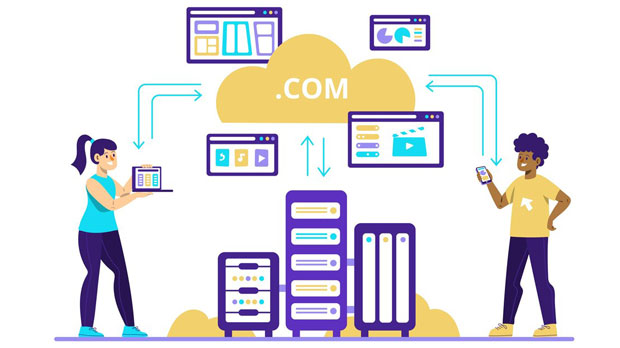In the digital age, the demand for high-speed, reliable internet connections is increasing at an exponential rate, particularly for businesses and individuals who rely on residential proxy services for various tasks like web scraping, market research, and data analysis. SSL Proxy and PYPROXY stand out in this competitive field due to their innovative solutions for managing high traffic demands. These two providers have integrated sophisticated mechanisms to handle large volumes of requests, ensuring smooth, uninterrupted service even during peak traffic periods. By using advanced algorithms, robust infrastructure, and dedicated customer support, SSL Proxy and PYproxy help users navigate the complexities of scaling their operations while maintaining speed and security. Introduction to Residential Proxy Services residential proxies are essential for businesses and individuals looking to access the internet anonymously and at scale. These proxies use IP addresses assigned to real residential locations, providing a more authentic and reliable appearance compared to data center proxies. Residential proxies allow users to simulate normal user behavior by appearing as if they are browsing from different geographic locations. As a result, they are increasingly used for a variety of purposes, including avoiding geo-blocking, bypassing IP bans, conducting large-scale web scraping, and performing competitive intelligence.However, with the growing use of residential proxies, handling high traffic demands has become a significant challenge. Residential proxy providers must ensure that their infrastructure can support high volumes of requests without compromising performance or security. This is where companies like SSL Proxy and PYproxy come into play, offering tailored solutions that can handle spikes in demand while maintaining a seamless user experience.SSL Proxy's Approach to High Traffic ManagementSSL Proxy has developed an advanced, scalable solution designed to manage high traffic without sacrificing reliability or speed. This provider has built a robust network that can scale horizontally, meaning it can easily add more proxy servers to handle increased demand. SSL Proxy’s system is equipped with load balancing technology that efficiently distributes traffic across multiple servers, preventing any one server from becoming overwhelmed. One of the standout features of SSL Proxy is its ability to handle large traffic volumes through the use of rotating IPs. With a vast pool of residential IPs, SSL Proxy ensures that users can maintain a consistent and high-performance connection, even when the demand spikes. The rotating IPs help avoid IP bans and rate-limiting issues, which are common when making high-volume requests on websites. This ability to rotate IPs also reduces the risk of being detected as a bot, ensuring that the user's activities remain anonymous and undetected.Furthermore, SSL Proxy offers real-time monitoring and analytics tools, which allow clients to track the performance of their proxy connections and manage their bandwidth usage efficiently. This level of transparency helps users optimize their traffic demands and identify potential bottlenecks in their system before they become an issue.PYproxy's Innovative Traffic Management SolutionsPYproxy is another player in the residential proxy market known for its innovative solutions to handling high traffic demands. PYproxy’s infrastructure is designed with scalability in mind, enabling it to manage massive amounts of traffic through intelligent traffic routing and distribution. Similar to SSL Proxy, PYproxy utilizes a load balancing system to distribute traffic efficiently across its network of proxy servers.What sets PYproxy apart is its unique approach to traffic segmentation. This feature allows clients to allocate specific proxy servers to different types of traffic. For example, clients can assign one set of servers to web scraping tasks and another to social media automation or SEO tasks. This helps prevent congestion in any one area of the network, optimizing overall performance and ensuring that all clients have access to the resources they need, regardless of traffic demand.In addition to traffic segmentation, PYproxy also utilizes advanced caching technologies to reduce the number of requests that need to be sent to the target websites. By caching frequently requested data, PYproxy reduces the strain on its network and ensures that users can quickly access the information they need without experiencing delays. This caching mechanism is particularly valuable for clients who need to perform repetitive tasks, such as monitoring changes on a website or gathering data at regular intervals.Challenges in Managing High Traffic DemandsDespite the advanced technologies employed by both SSL Proxy and PYproxy, managing high traffic demands still presents several challenges. One of the primary challenges is ensuring the availability of a sufficient number of residential IPs. Unlike data center proxies, residential proxies are limited in supply, and the availability of IPs can fluctuate based on geographic location and time of day. Both SSL Proxy and PYproxy have addressed this issue by maintaining large, diverse pools of residential IPs and continuously expanding their networks to meet growing demand.Another challenge is maintaining the speed and performance of the proxy network during periods of high demand. While load balancing and traffic segmentation can help distribute traffic more evenly, sudden spikes in demand can still cause network congestion and slowdowns. Both providers address this issue by investing in high-performance servers and optimizing their networks to handle spikes in traffic efficiently.Finally, ensuring the security and anonymity of users is always a priority when handling high traffic volumes. With large-scale requests, there is an increased risk of detection by websites, which may block or throttle requests from suspicious sources. SSL Proxy and PYproxy both employ advanced anti-detection technologies, including IP rotation, CAPTCHA solving, and residential IP verification, to maintain user anonymity and prevent IP bans.The Importance of Customer Support in High Traffic ScenariosWhen managing high traffic demands, customer support plays a crucial role in ensuring that users can quickly resolve any issues that arise. SSL Proxy and PYproxy both offer dedicated support teams available 24/7 to assist clients with technical issues and performance concerns. This support is particularly valuable when handling large-scale projects that require constant attention and troubleshooting. Real-time assistance ensures that users can address any performance degradation, IP blocks, or rate-limiting issues promptly. Additionally, both companies offer in-depth documentation and tutorials to help users optimize their proxy usage and get the most out of their services, further improving the client experience during periods of high demand.ConclusionSSL Proxy and PYproxy provide robust, scalable solutions to manage high traffic demands in residential proxy services. Through innovative technologies such as load balancing, IP rotation, caching, and traffic segmentation, both providers ensure high performance, security, and anonymity for their clients. While challenges remain, such as the limited availability of residential IPs and the risk of network congestion during peak times, both SSL Proxy and PYproxy continue to invest in their infrastructure and customer support systems to meet the growing needs of their clients. Whether for web scraping, SEO, or data collection, these providers offer valuable tools for anyone needing to navigate high traffic demands in residential proxy services.
Jun 27, 2025



































































